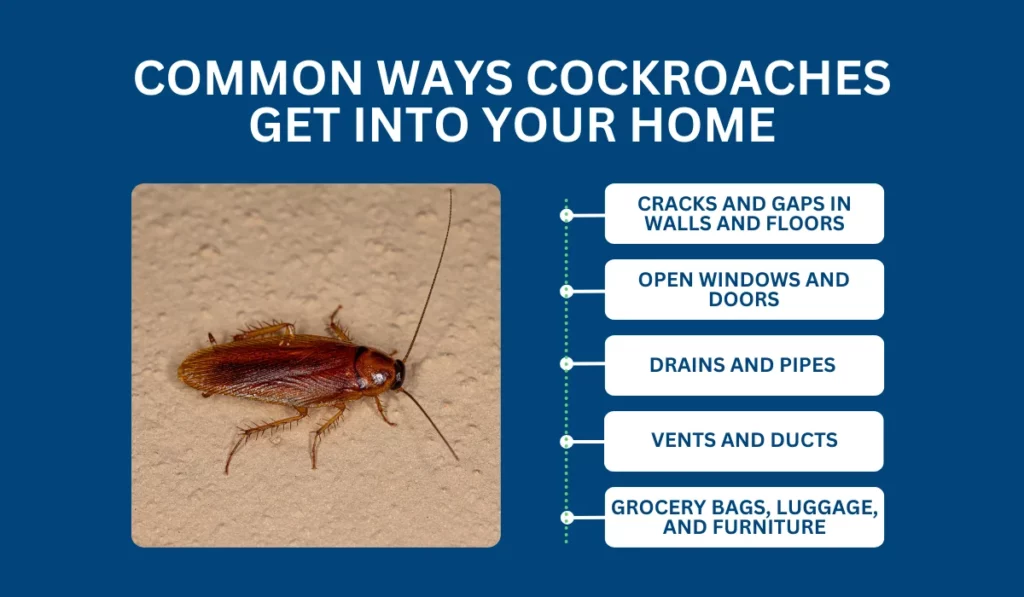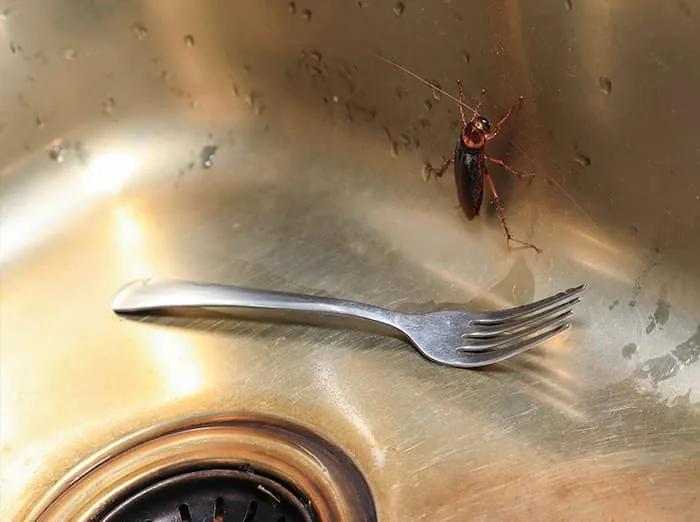Cockroach Treatments in Florida
Exterminator Services for Coral Springs, Margate, and Coconut Creek
Florida’s subtropical climate, with its plentiful warmth and humidity, is appealing for residents – but it also provides perfect conditions for cockroaches. These resilient insects find abundant moisture, consistent food sources, and steady temperatures, enabling them to breed nearly year-round. In Coral Springs, as well as nearby communities like Margate and Coconut Creek, overlooking the earliest signs of roaches allows these pests to proliferate, jeopardizing cleanliness and triggering occupant discomfort. This service page explains why roaches thrive in Florida, how to identify an incipient infestation, and why a professional cockroach exterminator employing targeted cockroach treatments is essential for lasting control. Taking action quickly upon noticing droppings or nighttime sightings spares property owners from deeper contamination, occupant complaints, and a more invasive remediation process.
Why Cockroaches Flourish in Florida

- Mild, Short Winters
In cooler states, extended freezing conditions slow or kill roach populations for months. Florida’s winter rarely dips below freezing for long, letting cockroaches remain active and reproduce almost year-round. Even short cold snaps do not hamper them indoors, where air conditioning or heating ensures stable warmth. - High Humidity and Frequent Rainfall
Many roach species thrive on moisture, which Florida’s environment supplies – from leaky pipes in kitchens to condensation around air-conditioning units. Damp corners in bathrooms, basements, or under sinks create ideal harborage for roaches, and consistent rainfall preserves moist soil near foundations where some species breed. - Minimal Seasonal Dormancy
In colder regions, roach reproduction often stops or drastically slows in winter. In southwestern Florida, mild temperatures rarely enforce such breaks, so a handful of roaches can turn into a robust colony if occupant or property manager efforts remain partial. - Plentiful Food Opportunities
Cockroaches consume nearly any organic matter, from leftover pet kibble to crumbs behind kitchen appliances. Suburban life in Coral Springs or Margate – featuring busy occupant routines and open trash bins – can inadvertently supply roaches with easy meals if occupant vigilance lags (like failing to seal cereals or wipe counters daily). - Frequent Movement of Residents and Goods
With occupant transitions or short-term rentals, roaches might enter through cardboard boxes, secondhand furnishings, or shipments. Once inside, roaches stay hidden in wall crevices or behind appliances, breeding until occupant detection spurs professional or occupant-based intervention.
Telltale Indicators of a Roach Infestation
- Droppings
Different cockroach species leave distinct droppings. German cockroaches deposit pepper-like specks or smears, while larger roaches produce cylindrical pellets. Fresh droppings typically appear dark and damp. Discovering them near food storage areas, behind appliances, or along baseboards reveals active roach presence. - Egg Casings (Oothecae)
Roaches lay egg capsules containing multiple eggs, often glued to hidden surfaces like cabinet undersides or behind furniture. Noticing these brownish or segmented casings signals breeding roaches. Some species, such as German roaches, may carry oothecae until hatching, so not all capsules are left behind. - Musty or Oily Odor
Larger populations sometimes produce a pungent, musty smell in enclosed spaces such as cupboards or pantries. Even smaller roach clusters can generate faint oily odors if left undisturbed for weeks. Occupants noticing unexplained smells should investigate drawers, behind appliances, or cabinets. - Nighttime Sightings
Flicking on lights in a dark kitchen or bathroom and spotting roaches scattering indicates an escalating infestation. Roaches generally forage at night; seeing them during daylight typically signifies severe overcrowding. Early occupant response ensures roaches do not become entrenched behind walls or in multiple rooms. - Smear Marks
In humid areas, cockroaches may leave irregular smear lines or dark streaks on walls or corners. Repeated occupant noticing of these smudges near baseboards, behind refrigerators, or in damp cupboards often confirms well-traveled roach routes.
Why Swift Cockroach Treatments Matter
- Health and Sanitation
Roaches can transfer bacteria onto surfaces or stored food, risking occupant health. Their droppings can also trigger allergies or aggravate asthma in vulnerable individuals. Rapid extermination protects occupant well-being and property cleanliness. - Rapid Reproduction
Certain roach species (especially German cockroaches) multiply quickly if left uncontrolled. A few overlooked roaches can balloon into a significant infestation in a few weeks. Early occupant action or professional steps minimize cost, occupant stress, and potential re-infestation across rooms or floors. - Property Reputation
For businesses – like restaurants or hotels – roach sightings can tarnish occupant trust, drive negative reviews, or even prompt health inspection flags. For homes, occupant embarrassment or disrupted daily life fosters tension. Prompt solutions preserve brand image and occupant comfort. - Daily Occupant Stress
Coexisting with roaches triggers unease or anxiety over unexpected encounters, droppings in drawers, or potential contamination on counters. Comprehensive removal relieves occupant fears, letting them focus on daily routines without persistent scanning for roaches.

Why a Professional Exterminator is Integral
- Accurate Species Identification
A cockroach exterminator first determines which roach species (German, American, smoky brown, etc.) inhabits the property. Species identification shapes specific approaches: German roaches hide near kitchens or bathrooms, while American roaches might nest in basements or near drains. - Strategic Trapping and Baiting
DIY sprays can scatter roaches deeper into wall voids if misapplied. Professionals place baits or insect growth regulators precisely along roach thoroughfares—like behind stoves or baseboards—where they gather food or water. This approach targets entire nest populations, not just visible stragglers. - Exclusion and Sanitation Advice
Beyond extermination, occupant housekeeping—like storing cereals in sealed containers or fixing leaky pipes—removes resources roaches need to persist. Technicians recommend occupant steps—such as sealing cracks, daily trash disposal—to ensure roaches find no stable foothold. - Safe, Targeted Use of Chemicals
Exterminators minimize occupant exposure to insecticides by focusing treatments in corners or hidden spaces where roaches actually travel. Occupants typically face minimal downtime, quickly returning to daily life once sprays dry or baits settle. - Follow-Up and Monitoring
Because roach egg capsules hatch over time, re-checks confirm no new wave arises. Sticky traps or occupant sightings over subsequent weeks guide additional spot treatments if needed, guaranteeing occupant relief from roach expansions.
Methods for Cockroach Eradication
- Inspection and Mapping
Professionals examine kitchens, bathrooms, basements, or behind large appliances, noting droppings, egg casings, or roach sightings. Each zone’s humidity and occupant usage patterns clarify trap or bait station placement. Species recognition tailors the solution set—like focusing gel baits in kitchen cracks if they’re predominantly German roaches. - Gel Baits and Bait Stations
Commonly used for roaches like the German cockroach, gel baits in crevices lure roaches who consume slow-acting toxins and spread them to nest mates. Bait stations containing insecticides also remain effective for weeks, systematically killing entire colonies through shared feeding. - Insect Growth Regulators (IGRs)
IGRs hamper egg or nymph development, disrupting roach life cycles. Applied near known roach trails—like under sinks or behind fridges—they block new roach generations from reaching breeding adulthood. Used with adulticides or baits, IGRs ensure no ongoing reproduction. - Residual Sprays
Applying insecticides along wall-floor junctions, baseboards, or cracks kills roaches traveling these routes. Occupants typically wait until products dry, quickly resuming normal routines. Residual sprays linger for days or weeks, tackling newly hatched roaches or those evading initial treatments. - Dust Applications
In wall voids or behind permanent fixtures, dust clings to roaches crossing these hidden spaces. As roaches groom themselves, they ingest dust, leading to colony-wide demise if used strategically. Dust remains active for extended periods, complementing other measures.
Serving Coral Springs, Margate, and Coconut Creek
Coral Springs: Known for family-oriented neighborhoods and well-maintained parks, Coral Springs sees occupant transitions that might inadvertently import roaches through cardboard boxes or secondhand furnishings. Quick occupant detection—like seeing droppings behind stoves or scurrying roaches at night—plus professional interventions hamper serious infestations.
Margate: A suburban area mixing older homes with new expansions. Rodents or roaches might find water sources in older plumbing or unsealed corners if occupant housekeeping or structural sealing is partial. Thorough occupant synergy with professional roach treatments ensures each property remains hygienic.
Coconut Creek: Celebrated for greenery and nature preserves, Coconut Creek’s lush environment fosters insect populations, which roaches also exploit. Occupant yard or landscaping mismanagement may attract roaches near foundations, encouraging them to slip indoors. Early occupant vigilance—like scanning corners for droppings—plus robust extermination stifles expansions quickly.

Why Our Cockroach Treatments Excel
- Florida-Specific Strategies
Because southwestern Florida rarely experiences insect-curbing cold spells, roaches breed continuously. Our approach merges occupant housekeeping—like limiting moisture or removing food residues—with well-placed baits, insect growth regulators, and perimeter sprays for year-round coverage. - Precision and Occupant Safety
We focus on roach hideouts—like under sinks or in cracks behind stoves—rather than saturating entire rooms. Occupants can often remain on-site, waiting a short while for dryness if chemical sprays are used, minimizing downtime while ensuring roaches contact lethal products in their high-traffic spots. - Focus on Prevention
Removing roaches is partial success if occupant or building vulnerabilities remain. Sealing cracks, fixing leaky faucets, or discarding cardboard piles denies roaches the resources they need. Occupant synergy cements a roach-free environment for the long term. - Ongoing Monitoring
Because roach egg sacs hatch over time, occupant or professional re-checks ensure newly hatched nymphs also meet lethal contact. If occupant sightings reoccur, additional spot or perimeter solutions finalize thorough extermination, delivering occupant peace of mind.
Call to Action
Seeing pepper-like droppings in kitchen cabinets, roaches scattering when lights flip on, or musty odors in damp cupboards? Contact us to learn more or schedule your service. Our cockroach treatments in Coral Springs, Margate, and Coconut Creek systematically eradicate roach populations at every life stage—egg, nymph, and adult—ensuring occupant relief from daily stress, possible food contamination, or unsightly roach sightings. A seasoned exterminator approach spares you from the guesswork of do-it-yourself attempts, restoring occupant comfort in living or workspaces swiftly.
Quick occupant action prevents small roach clusters from exploding into major infestations, where entire floors or multiple rooms need deeper remediation. Combining occupant housekeeping—like sealing grains, removing spills, or clearing damp corners—and advanced chemical or bait solutions corners roaches at every turn. Freed from unexpected roach encounters, your property upholds a level of cleanliness consistent with South Florida’s vibrant, welcoming lifestyle.
Maintaining a Roach-Free Environment
- Store Food Securely
Use lidded containers for cereals, grains, or snacks. Immediately wipe counters or floors of crumbs. Roaches rely on easy meals to fuel breeding cycles; removing them compels roaches to feed on baits instead. - Eliminate Water Sources
Repair leaks or dripping pipes under sinks, clear condensation around AC units, and wipe up spills promptly. Roaches need consistent moisture, so occupant dryness measures hamper roach harborages. - Declutter and Dispose of Waste
Regularly remove trash, using bins with tight-fitting lids. Recycle cardboard promptly instead of letting it accumulate. Cluttered corners and leftover debris create ideal roach hiding places. - Seal Cracks
Caulk foundation lines or fill gaps along door frames and windows where roaches might slip in. Even small openings can be avenues for roach migration if occupant sealing efforts remain incomplete. - Periodic Inspections
Glancing behind stoves, fridges, or under sinks each month for fresh droppings or egg casings ensures occupant discovery of any emergent roach presence quickly. Early detection leads to simpler occupant or professional fixes before colonies spread widely.
By blending occupant diligence and professional extermination solutions, southwestern Florida properties maintain a roach-free status. Even with Florida’s mild winters encouraging roach reproduction, occupant vigilance—like daily cleaning or sealing vulnerabilities—plus potent roach treatments ensures no stable foothold remains for these pests, preserving occupant comfort and sustaining the tidy environments that characterize Coral Springs, Margate, and Coconut Creek.
